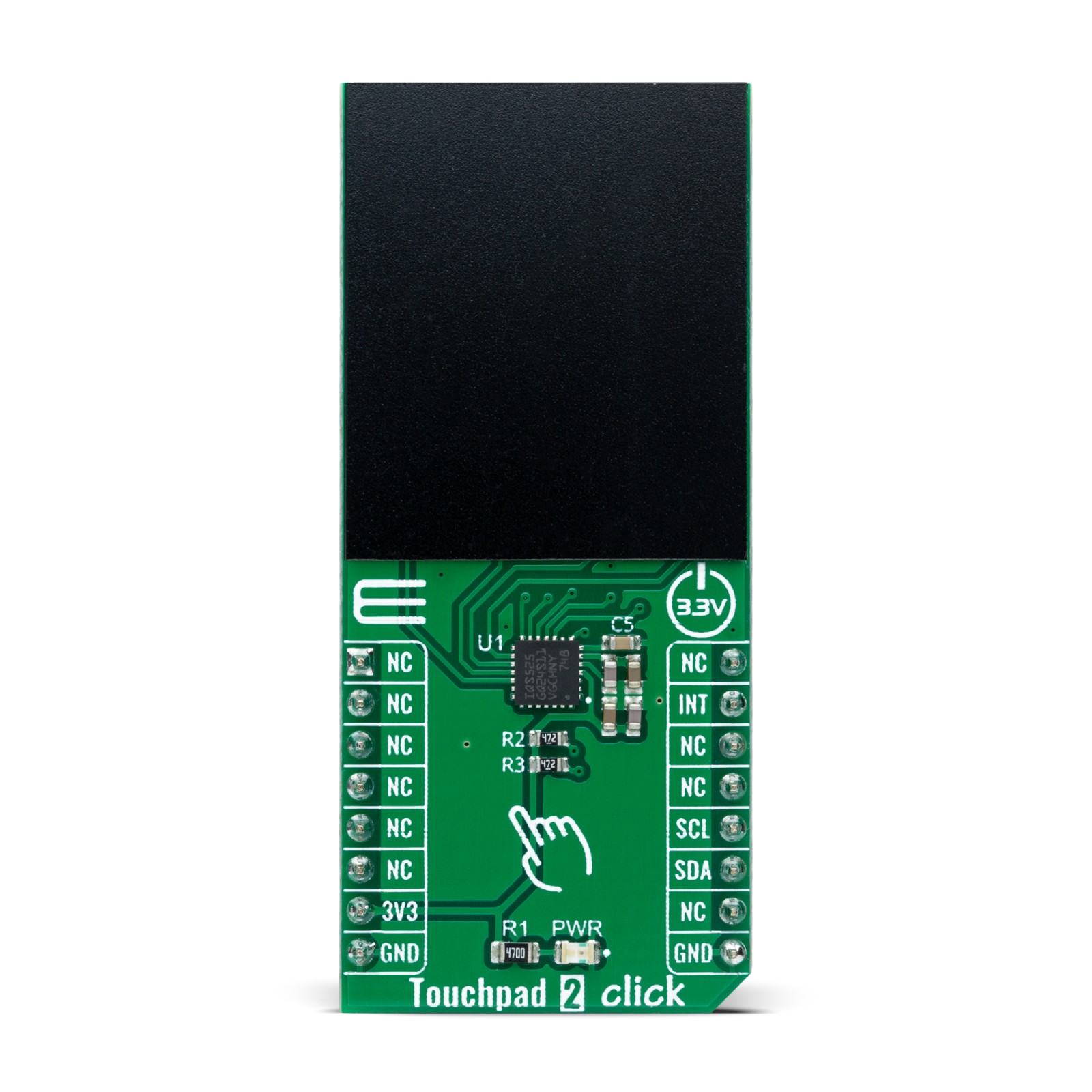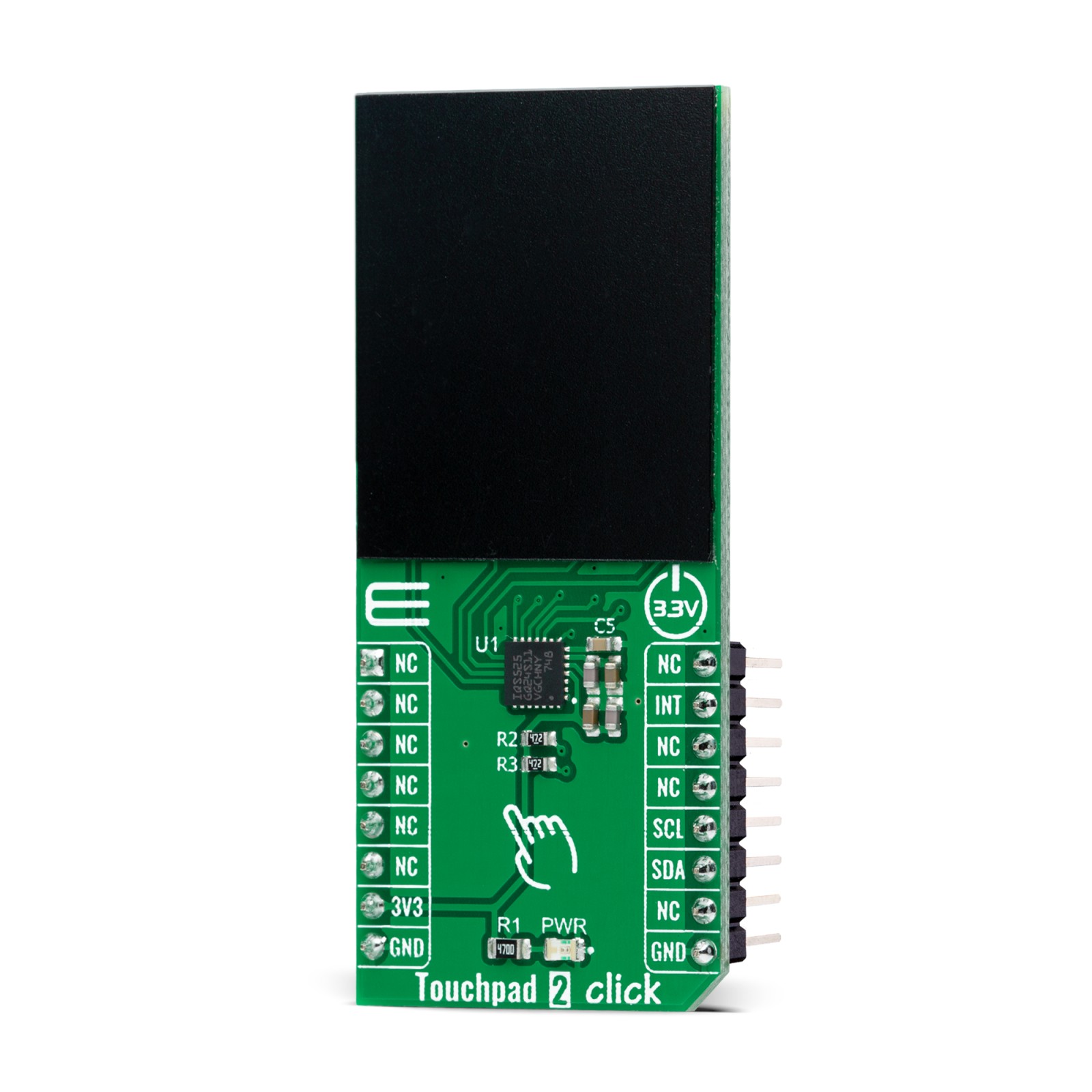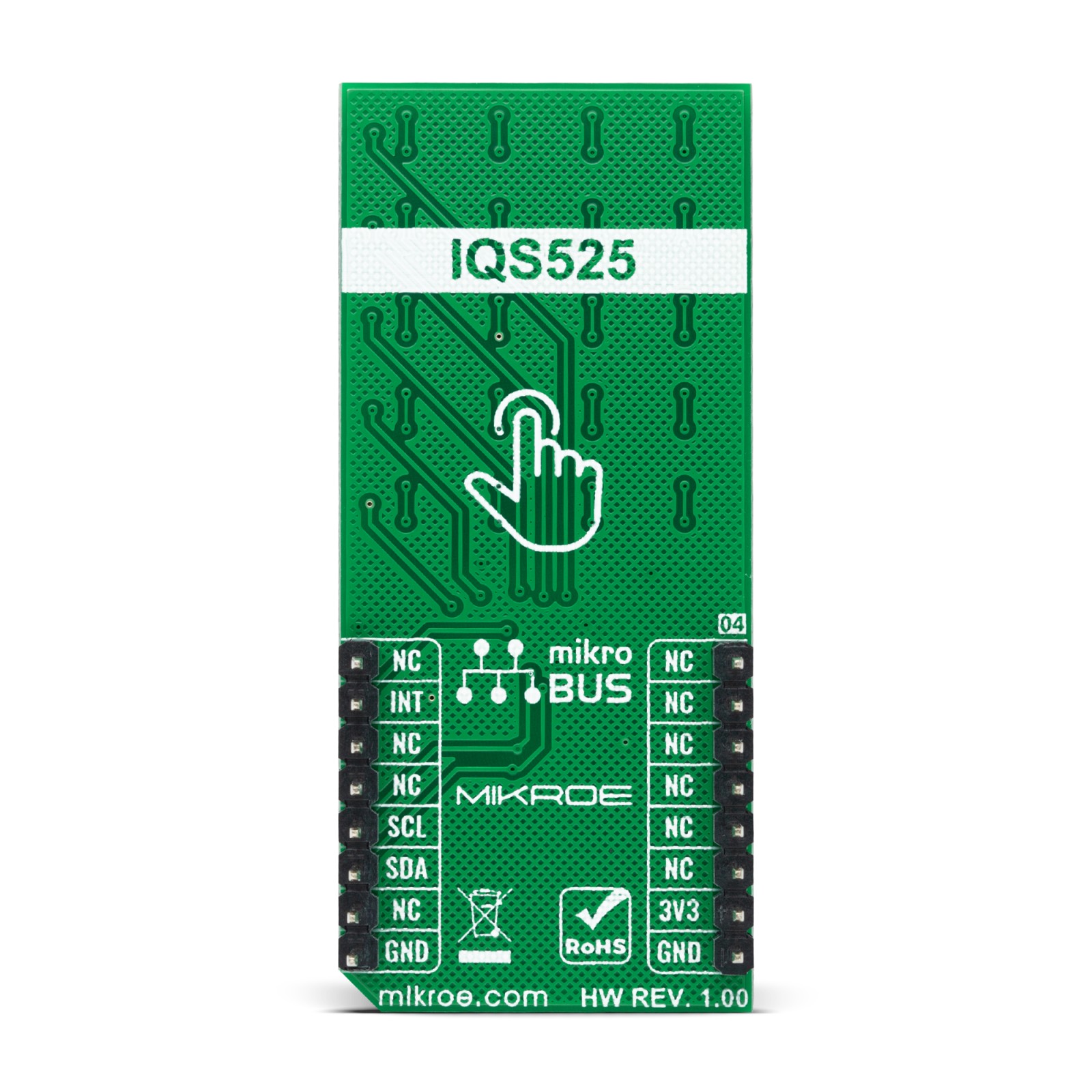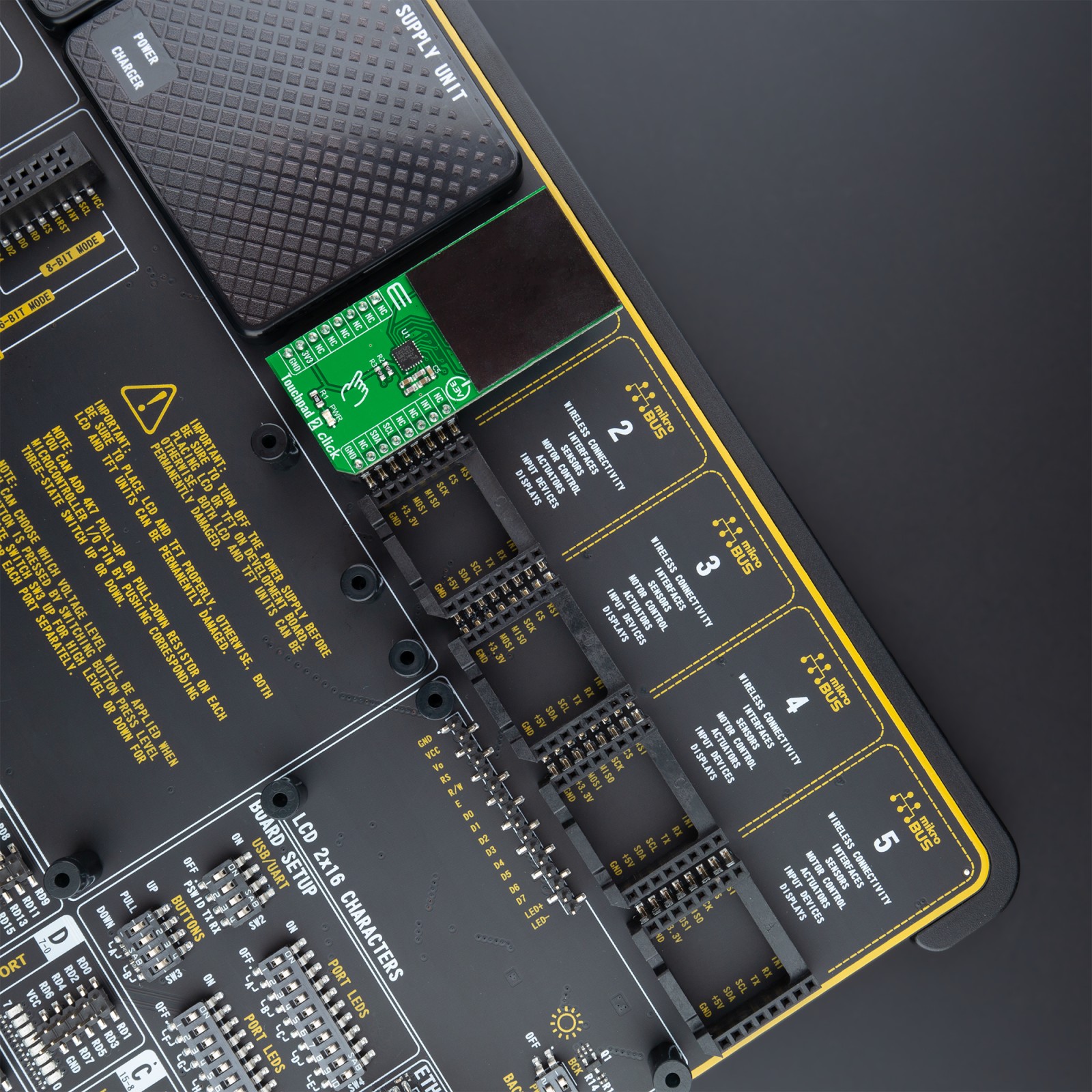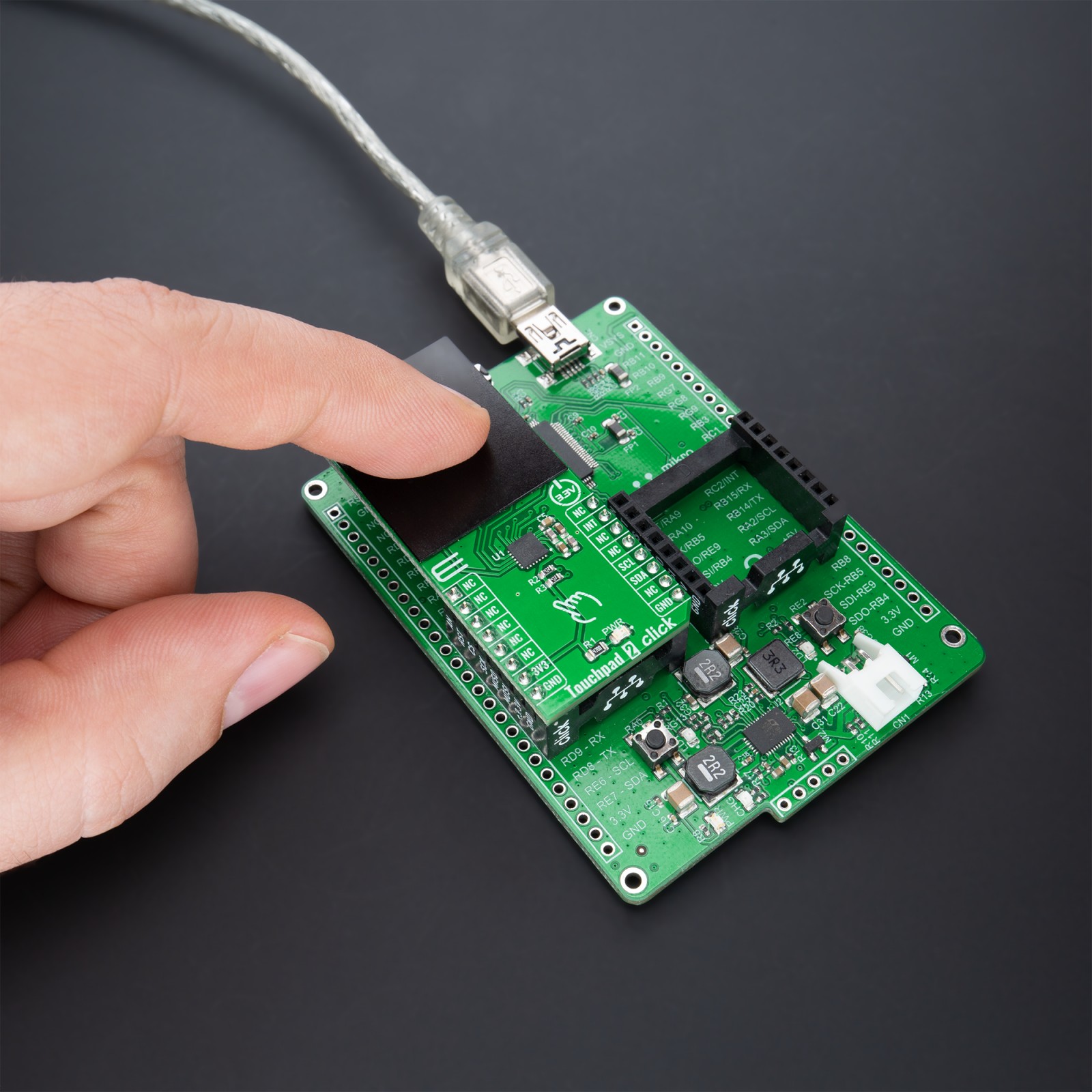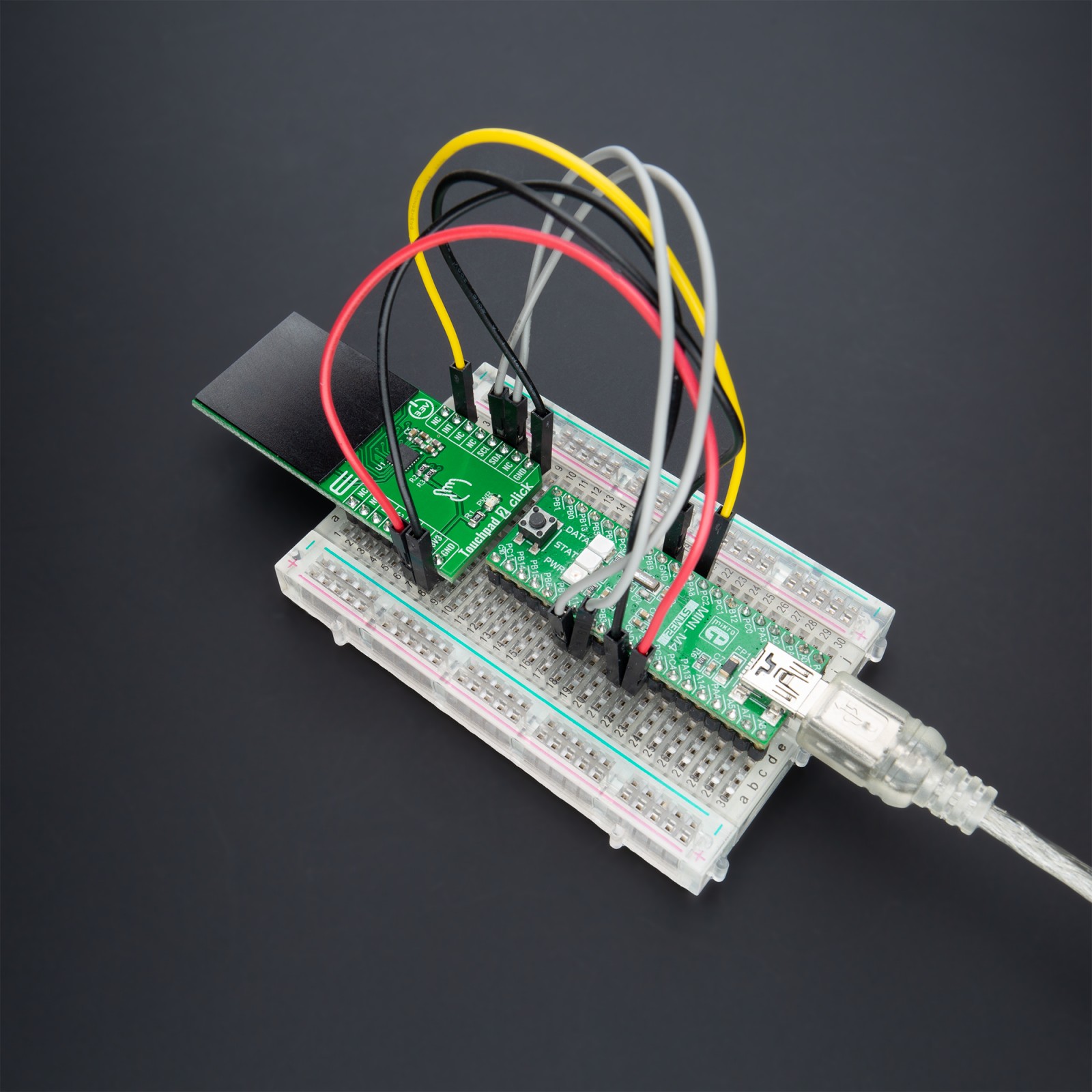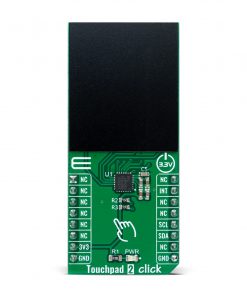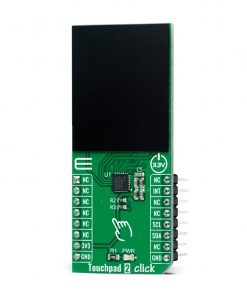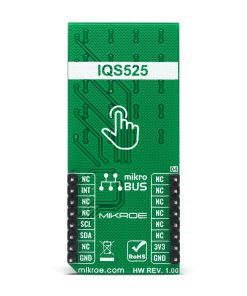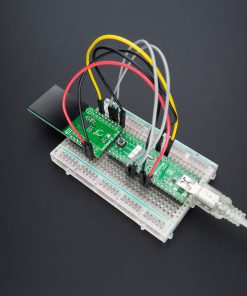Touchpad 2 Click
R205.00 ex. VAT
Touchpad 2 Click is a compact add-on board that easily integrates projected capacitive touch into their applications. This board features the IQS525, a projected capacitive touch and proximity trackpad/touchscreen controller from Azoteq. It features best in class sensitivity, signal-to-noise ratio, and automatic tuning of electrodes, in addition to the multi-touch and multi-hover feature. This Click board™ is characterized by embedded gesture engine recognition for simple gestures (tap, swipes, hold), as well as built-in noise detection and filtering. This Click board™ is suitable for human-machine interfaces, keypad or scrolling functions, single-finger gesture-based interfaces, and more.
Touchpad 2 Click is supported by a mikroSDK compliant library, which includes functions that simplify software development. This Click board™ comes as a fully tested product, ready to be used on a system equipped with the mikroBUS™ socket.
Stock: Lead-time applicable.
| 5+ | R194.75 |
| 10+ | R184.50 |
| 15+ | R174.25 |
| 20+ | R167.69 |

